Posted by Elena del Valle on February 24, 2016
President, The Pathfinder Group
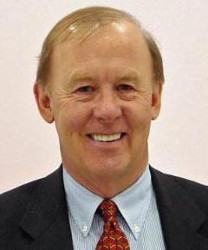
Jay Gronlund, president, The Pathfinder Group
The surge behind this exploding Bernie phenomenon is fascinating for many reasons. It is certainly an indication of how divergent our society and politics have become, and this could even intensify in the future. It also shows the political potential of finding and concentrating on the most pronounced issues that frustrate younger people from all ethnic backgrounds, especially Hispanics. Interestingly, from a branding perspective, there are some revealing lessons from this unexpected success of the Bernie Sanders brand.
Click here to read the entire article How Hispanic Millennials Are Driving the Bernie Sanders Brand
Posted by Elena del Valle on February 18, 2016
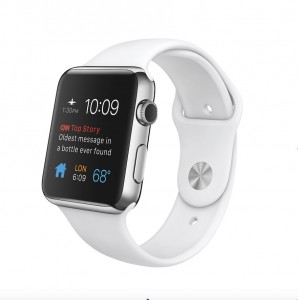
Apple Watch
Photo: Apple
Less than a month after I bought a new Swiss made watch it stopped working. I contacted the manufacturer per the warranty instructions to discover the company had been purchased by another watch seller. Dozens of calls, emails and faxes and a month later I’m still waiting for my repaired watch to arrive. As I think of replacement options and future purchases a smartwatch has crossed my mind. If a traditional watch under warranty was such a hassle what would a smartwatch offer?
Thinking of acquiring your own bit of wrist software bling? If you plan to buy a smartwatch you will be among 6 percent of Americans who own one, according to Watches and Jewelry US, September 2015, a report by Mintel. Researchers at the company believe by 2020 sales of traditional and sport watches could suffer since 21 percent of survey respondents who bought a watch in the previous year said they were very interested in the smartwatch trend. Among men between 18 and 34 years old 37 percent said they were interested.
“There is a very real possibility that smartwatch sales could cannibalize sales of other watches over the next five years,” said Diana Smith, senior research Analyst, Retail & Apparel at Mintel. “This scenario assumes that the current smartwatch buzz manifests into sales that can withstand momentum as more functional apps are created, more developers launch new products and prices come down. It also assumes that sport watches continue to grow in light of consumers’ heightened interest in using them to track their fitness levels and compete against others in various forms of exercise. An ideal situation for the smartwatch sector would be one where smartwatches (and sport watches) lift the entire category, while traditional watches – which comprise the majority of total watch sales – remain at least steady.”
U.S. retail sales of watches and jewelry may have been $79.3 billion in 2015, up 1.6 percent over the previous year. Slow growth may continue through 2020 to reach a combined total of $88.6 billion, and Mintel researchers believe watch sales will reach $9.5 billion in 2015, gaining 2 percent over 2014. Based on an estimated growth rate of 4 percent year-over-year (YOY), the market could reach $11.5 billion by 2020.
It is worth noting that traditional watches were favorites among respondents to the Mintel survey, where 31 percent of men and 30 percent of women preferred them. Among the survey takers 25 percent, including 32 percent of older Millennials (consumers aged 29-38), said they buy watches mainly as a fashion statement
Posted by Elena del Valle on February 10, 2016
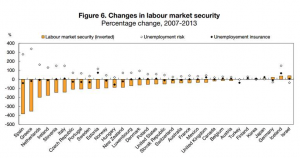
Changes in labour market security 2007-2013- click to enlarge
Chart: Organisation for Economic Co-operation and Development (OECD)
How is your job satisfaction? If your answer is average, it is not surprising. If the quality of your employment declined in the past 10 years you are not alone. What makes a good job and how do individual countries measure in that category? Seeking to answer these questions the Organisation for Economic Co-operation and Development (OECD) examined job quality from the following perspectives: Earnings quality, job market security and work environment quality.
For earnings the organization’s researchers looked at earnings and their distribution across the workforce. For job market security they examined the risk of unemployment and its expected duration. When considering the quality of the working environment they looked at the incidence of demands and resources and the combined potetntial of high demands and low resources that result in job strain.
The best performing countries are Australia, Austria, Denmark, Finland, Germany, Luxembourg, Norway, and Switzerland. They are followed by Belgium, Canada, Czech Republic, France, Ireland, Israel, Japan, Korea, Mexico, Netherlands, New Zealand, Slovenia, Sweden, United Kingdom, and United States display with average performance. That means than when examining the three job quality measures, they countries display no more than one outcome in the top-10 or the bottom-10 of the ranking. At the bottom of the list are Estonia, Greece, Hungary, Italy, Poland, Portugal, Slovak Republic, Spain and Turkey.
The OECD data also reveal significant differences across groups of workers. Young and unskilled workers generally have the worst performance in terms of employment and have lower earnings and considerably higher labour market insecurity and higher job strain than other segments. Women’s employment rates are much higher than men’s while at they are paid far less than their male counterparts. On the up side, they are less likely than men to suffer from job strain.
Job quality dropped in the past decade. The crisis affected the number of jobs and their quality. Earnings quality decreased in two thirds of the OECD countries, especially in Greece and the United Kingdom; job market security worsened in most OECD countries, especially in Spain and Greece.
The mission of the OECD is to promote policies that will improve the economic and social well-being of people around the world. The organization, based in Paris, France, was established in 1961. It has 34 member countries, 2,500 staff and a budget of 363 million euros.
Posted by Elena del Valle on February 5, 2016
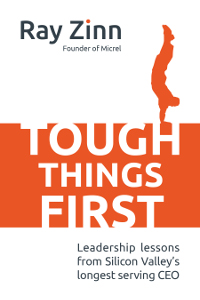
Tough Things First
Photos: McGraw Hill
When as a young man Ray Zinn decided to drop out of college he learned a lesson in discipline from his parents that influenced his life and eventually his career. In time he became convinced that we must do the things we don’t want to do because they are either not fun or look too imposing ahead of easy ones. This belief served him well when in 1978 he co-founded Micrel, a company that sells electronics for smartphones, consumer electronics and enterprise networks. He led the profitable company for 37 years until his retirement last year.
In Tough Things First Leadership Lessons from Silicon Valley’s Longest-Serving CEO (McGraw Hill, $25), a 250-page hardcover book published this year, he shares his approach to business and leadership for an audience of entrepreneurs and business leaders. He is convinced that good leaders learn to love and embrace the distasteful tasks in their lives once they understand how important they are to their careers and success.
“I wanted to synthesize my 37 years of running a high tech company, with the purpose of inspiring and helping the up-and-coming entrepreneur in running their businesses correctly,” he said by email via his publishing company when asked about the main reason he wrote the book.
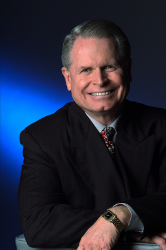
Ray Zinn, author, Tough Things First
The book is divided into nine chapters and an epilogue in two parts: Business as a body: disciplining an organization from head to foot and Entrepreneurialism: building companies that last through the ages. Each chapter ends with a bullet point list of lessons. He wraps up highlighting seven aspects he believes are necessary to start a company. They are: outlining financial milestone goals, preparing an exit, establishing principles, coming up with a plan for the unexpected emergency that will come up sooner or later, striving for calm and good mental health, preparing for the long term, and being humble.
“The biggest surprise is the effort and cost to market the book,” he said. “Publishers today rely on the author far too much for marketing, and reaching broad audiences takes effort.”
Zinn founded Mentor Capital, an entrepreneur accelerator, to support the efforts of innovators wishing to establish new companies and to change the leadership foundations in Silicon Valley and beyond. He said the greatest challenge to the three year long book project for him was being legally blind. Tough Things First was his first book.
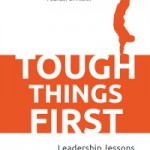
Click to buy Tough Things First
Comments:
Filed Under: Books















